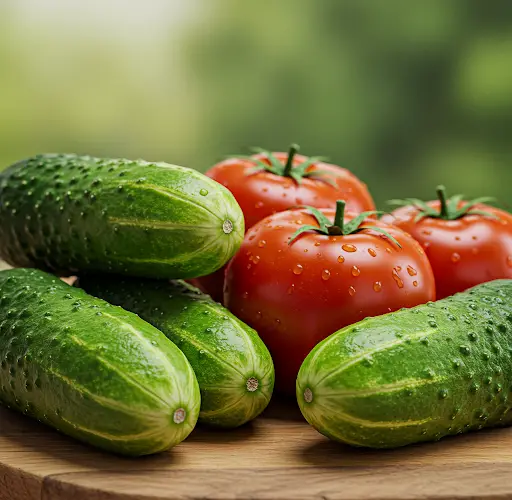How to Make a Powerful Homemade Liquid Fertilizer Using Common Household Ingredients
Creating your own liquid fertilizer at home can be a game-changer for your vegetable garden. Not only is it a cost-effective and eco-friendly alternative to store-bought fertilizers, but it also allows you to provide your plants with essential nutrients using ingredients you likely already have in your kitchen. This simple homemade solution boosts plant growth, supports root development, and helps prevent common plant diseases—all while being gentle on the environment.
Why Use Homemade Liquid Fertilizer?
Healthy soil is the foundation of a productive garden, and providing your plants with the right nutrients is essential to maintaining that soil health. Many commercial fertilizers can be expensive, overly concentrated, or filled with synthetic chemicals. Homemade fertilizers, on the other hand, offer a more natural and balanced way to feed your plants.
The recipe below combines dry yeast, baking soda, sugar, and water to create a nutrient-rich blend that strengthens plant roots, promotes lush foliage, and helps prevent fungal infections. It’s easy to make and highly effective for a wide range of vegetable plants.
Ingredients You’ll Need
-
1 liter of lukewarm water
-
2 teaspoons (approximately 20 grams) of dry yeast
-
1 teaspoon of baking soda
-
1 teaspoon of sugar (brown or white)
How to Prepare the Fertilizer
-
Dissolve the Ingredients
Start by pouring 1 liter of lukewarm water into a clean container. Lukewarm water activates the yeast more efficiently than cold water, helping to kickstart the fermentation process. -
Add the Yeast
Mix in 2 teaspoons of dry yeast. Yeast is a rich source of beneficial nutrients including B vitamins, amino acids, and enzymes—all of which are vital for healthy plant growth. -
Incorporate the Baking Soda
Add 1 teaspoon of baking soda to the mixture. Baking soda not only helps control fungal diseases, but also plays a role in balancing soil pH, making it easier for plants to absorb nutrients. -
Sweeten with Sugar
Add 1 teaspoon of sugar. Sugar acts as a food source for the yeast, enhancing its activity during fermentation. It also provides a mild energy boost to the plants themselves. -
Mix and Activate
Stir all the ingredients thoroughly until fully dissolved. Once mixed, cover the container to block out light and allow the mixture to sit for 30 to 40 minutes. During this time, the yeast will become active, and you’ll notice small bubbles or foam forming on the surface—this is a good sign. -
Dilute Before Use
After the activation period, dilute the entire liter of prepared solution by adding it to 10 liters of clean water. Stir well to ensure an even distribution of nutrients.
How to Apply the Fertilizer
Use the diluted fertilizer to water your vegetable plants, focusing especially on the root zone. Be sure to saturate the soil around the base of the plant, where nutrient absorption takes place. This solution can be applied every two to three weeks during the growing season to maintain strong, vigorous growth.
Benefits of Each Ingredient
Dry Yeast
Yeast contains essential B vitamins, enzymes, and amino acids that stimulate root development and overall plant vitality. It helps plants absorb nutrients more efficiently and supports the development of a robust root system—crucial for healthy, resilient vegetables.
Baking Soda
Acting as a mild antifungal agent, baking soda helps prevent common fungal infections that can damage leaves and stems. It also supports optimal soil pH, which improves nutrient uptake and encourages balanced plant growth.
Sugar
Sugar feeds the yeast, promoting fermentation and releasing beneficial byproducts into the solution. It also provides a quick source of energy for the plant, which can be especially useful during critical growth stages or after periods of stress.
A Simple Solution with Big Results
This homemade fertilizer offers a simple yet effective way to nourish your garden naturally. It’s especially beneficial for vegetable plants such as tomatoes, cucumbers, peppers, lettuce, and root crops like carrots and beets. The nutrients in this mixture help strengthen plant immunity, promote lush green foliage, and enhance fruit and vegetable production.
Best of all, this DIY solution is easy to make and gentle on your budget. By repurposing basic kitchen ingredients, you not only improve your plants’ health but also reduce waste and reliance on synthetic chemicals.
Final Thoughts
Giving your garden a boost doesn’t have to be complicated or expensive. With just a few household ingredients—dry yeast, baking soda, sugar, and water—you can create a powerful liquid fertilizer that supports vigorous growth, disease resistance, and productive harvests. Whether you’re a beginner or a seasoned gardener, this homemade mix is a smart addition to your plant care routine.
Try it out and enjoy healthier, more vibrant plants all season long.



